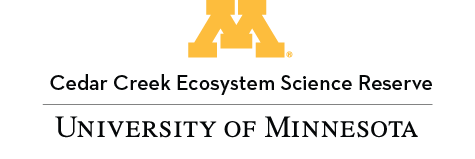
Cedar Creek Ecosystem Science Reserve is a place of intersections. Three of North America’s major terrestrial biomes (tallgrass prairie, deciduous forest, and coniferous forest) converge on the property, and a treaty line dividing Dakota and Ojibwe lands runs through the reserve. In addition to these historical intersections, Cedar Creek is located at the northern edge of the urban Twin Cities metro area and the southern edge of more rural Isanti County. Work at Cedar Creek capitalizes on the diversity provided by these ecological, cultural, and biogeographic intersections and gradients. Cedar Creek is owned and operated by the University of Minnesota in cooperation with the Minnesota Academy of Science.
- Our mission is to increase understanding of natural systems and to investigate and share sustainable solutions to environmental challenges.
- Our strategy for achieving this mission includes research, conservation, and education in partnership with members of our local and global community.
- Our vision is a future where biodiversity and the full diversity of people thrive.
- Our commitment is to be an inclusive place for research, mutual learning, and community for people of all identities
World-renowned scientists have made Cedar Creek their destination since the 1940s. From Ray and Eleanor Lindeman’s early work at Cedar Bog Lake to cutting-edge experimentation led by the world’s most cited ecologists, research here focuses on the natural world and the services ecosystems provide to the planet and to human society. Long-term work on biodiversity and ecosystem functioning, global change ecology, and prescribed fire are some of our best known projects. Our legacy spans scientific fields, taxa and methods and contributes to policy and theory, science education, and conservation as well as to the academic knowledge system. Many researchers at Cedar Creek are part of the NSF-funded Long-Term Ecological Research network. Education and community engagement programs connect learners from all backgrounds to our scientific work.
- Year Founded
- 1942
- Year Joined OBFS
- Size of Field Station (hectares)
- 1001-2500
- FSML Web Address
- https://cbs.umn.edu/cedarcreek
- Private nonprofit organization?
- No
- Universities affiliated / Parent Organization
- University of Minnesota
- Federal, state, or local governmental partners?
-
LTER
- Member of the Virtual Field
- Yes

